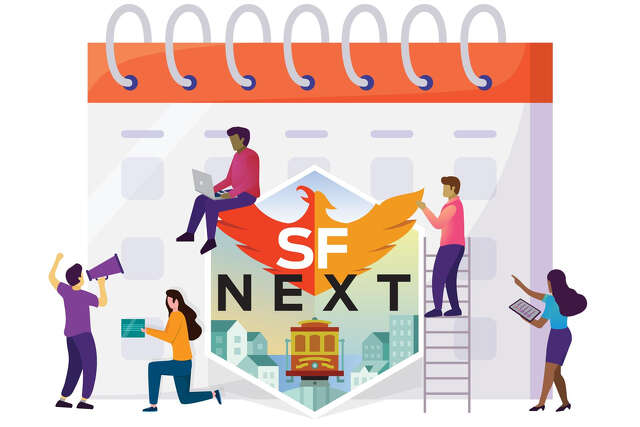This is a carousel. Use Next and Previous buttons to navigate
The arrival ofWhole Foods in Mid-Marketlast year was meant to be the culmination of a nearlytwo-decade effort to buildone of San Francisco’s biggest apartment projects at the corner of Eighth and Market streets.
The lavish store in the 1,900-apartment Trinity Place project promised more than 3,700 locally sourced products, offering 714 different wines, caviar and organic mushrooms when it opened last March. A city permit pegged the store’s construction budget at $12 million.
Itsabrupt temporary closureon Monday was another sign of San Francisco’s persistent public safety and economic challenges, fueling more criticism of city leaders and headlines around the world about the city’s crime woes forthe second straight week.
Whole Foods cited the safety of workers as the reason for the closure, and Supervisor Matt Dorseysaid Monday那the store was hit by “drug-related retail theft, adjacent drug markets, and the many safety issues related to them.”

Despite signs suggesting otherwise, Whole Foods’ location at 1185 Market St. in San Francisco is closed temporarily.
Yalonda M. James/The ChronicleAs nearby Mid-Market office buildings empty out — Uber, Block and Reddit have left or plan to leave the neighborhood this year, and Twitter has laid off more than two-thirds of its staff — residential and retail activity is越来越重要的for the area’s economic vitality. Whole Foods’ closure and its uncertain future — the company did not say when the store could reopen — is another worrying sign.
“Doom loopjust got slightly more doomy,” Arpit Gupta, a New York University professor who co-wrote a paper on potential urban death spirals, posted on Twitter in reaction to the closure.
Gupta told The Chronicle that supermarkets tend to be important anchors for nearby residents, though he didn’t know the economic details of this specific Whole Foods.
“My concern is that all routes for urban recovery, I think, require more consumption in city centers,” Gupta said. “This is true whether it involves the office workers coming back downtown, or a shift to a new ‘consumption city’ model with people living in, working remotely, and otherwise consuming in the city center.”
Attracting residents or workers requires investing in amenities, whether it’s shops or restaurants or leisure activities. And any barriers to creating or maintaining them, whether it be high costs or safety issues, means it’s more likely an area stays or becomes economically depressed, Gupta said.
Reports of Starbucks removing seats in multiple San Francisco coffee shops also surfaced this week. One employee said it was to deter homeless people and mentally ill individuals from stores, but the company has not confirmed this,SFGATE reported.
San Francisco Police Department crime data for the Tenderloin Station area, which includes the Mid-Market Whole Foods location, shows an increase in assaults and motor vehicle thefts over the past two years. Burglaries spiked in the first two years of the pandemic,mirroring citywide trends,but have fallen below 2019 levels in recent months. However, police officials have said atpast public hearings那retail crime and shoplifting is underreported.
Crime is also a major challenge for the Market, a grocery store located in the Twitter headquarters building two blocks west of Whole Foods.
“We are concerned about safety. We have private security. It’s still very unpleasant,” owner Chris Foley said.
The double whammy of remote work and theft led to a plunge in revenue during the pandemic, and the Market cut its hours and closed on weekends. Foley said that the Market will continue to stay open. He hopes more companies and government workers come back to the office more often.
“I’m committed to the people who work there. I’m committed to the community. We’re not quitters,” he said.
Mayor London Breed’s spokesperson, Jeff Cretan, said police and the mayor’s office have worked with Whole Foods for months over public safety and would continue to engage with the company over the future of the site.
“Public safety is Mayor Breed’s top priority and vital to the City’s work around restoring our economy and making our residents and workers feel safe,” Cretan said in a statement. “The Police will continue aggressively enforcing against open-air drug dealing, maximizing police response to urgent calls for assistance, partnering with retailers to address theft in their stores, and enforcing new street vending regulations to disrupt the sale of stolen goods.”
The Board of Supervisors approved $25 million for police overtime last month. Dorsey is also sponsoring a ballot measure to increase the police force’s minimum staffing.
Mid-Market’s struggles around cleanliness and crime aren’t new. In 1985, Chronicle columnist Herb Caen dubbed the Tenderloin and area around Hallidie Plaza as “le grand pissoir.” “Our sidewalks are filthy,” he wrote. “It’s ironic that the sewer tax is being increased even as the downtown city itself becomes a sewer.”
Those dirty streets persisted even after the city enacted the controversial“Twitter tax break”in 2011 to lure companies to the area. The pandemic arrived and fentanyl and other overdose deaths soared. Last year, the cityopened a service centerto help homeless people and drug users at U.N. Plaza — directly across the street from Whole Foods. It closed in December.
“Downtown S.F. looks like a zombie apocalypse. People who’ve not been there have no idea,” Twitter’s owner Elon Muskwrote on the social media platformMonday.
Reach Roland Li: roland.li@sfchronicle.com; Twitter: @rolandlisf



















